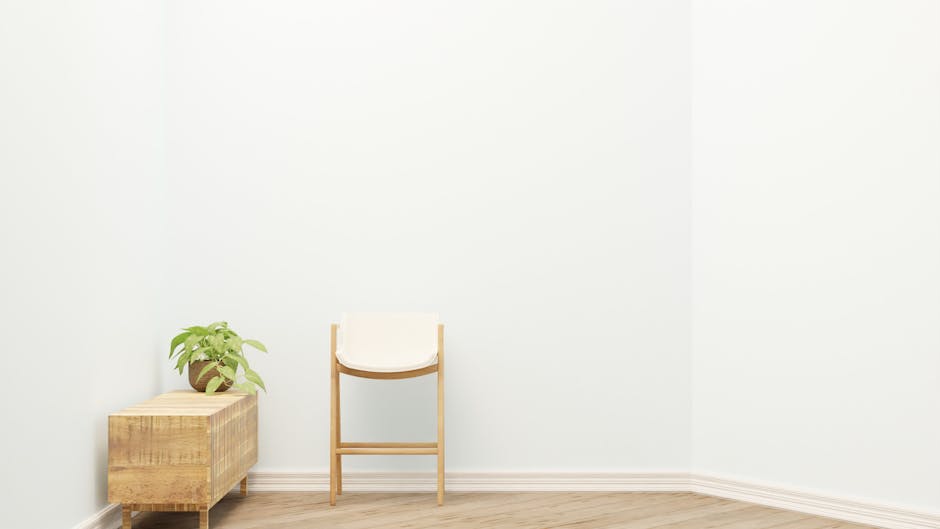Living in a small home doesn’t mean you have to sacrifice style or comfort. In fact, minimalism can help you make the most out of every inch.
Minimalism isn’t about getting rid of everything but about keeping what truly matters. It’s about creating a space that feels calm, clear, and inviting.
Small spaces require thoughtful choices to avoid clutter and chaos. With the right approach, you can turn your home into a serene oasis.
The good news? Minimalism is flexible and personal, so you can adapt it to fit your lifestyle perfectly.
Let’s dive into some easy, practical tips that will help you embrace minimalism in your small home without stress.
By the end, you’ll have a toolkit full of ideas to create a cozy, clutter-free haven you’ll love coming home to.
Smart Storage Solutions
One of the biggest challenges in small homes is managing storage without overwhelming the space. Smart storage solutions are essential to maintain a minimalist aesthetic while keeping things organized.
These tips focus on maximizing vertical space, using multifunctional furniture, and finding clever hiding spots. When storage is done right, clutter doesn’t stand a chance.
Here are five easy ways to improve your storage game and keep your small home feeling spacious and tidy.
1. Use vertical shelving – Installing shelves that go up to the ceiling draws the eye upward and creates more storage without taking up floor space. This helps you store books, decor, or baskets neatly while keeping surfaces clear.
2. Invest in furniture with hidden storage – Ottomans, beds with drawers, or coffee tables with compartments can double as storage spots. This reduces the need for extra furniture and keeps everyday items out of sight.
3. Hang wall-mounted organizers – Use hooks, pegboards, or magnetic strips to store kitchen tools, accessories, or even office supplies. This frees up drawers and counters, making your space feel less cluttered.
4. Declutter with storage baskets – Baskets and bins are perfect for grouping smaller items like toys, magazines, or craft supplies. Choose neutral colors or natural materials to keep the look cohesive and calm.
5. Utilize under-bed space – Sliding storage containers or shallow bins fit perfectly under the bed, ideal for seasonal clothes, shoes, or linens. This often-overlooked space can significantly reduce closet overload.
With smart storage in place, your small home will feel more open and organized, setting the stage for minimalist living. Now, let’s explore how to make your furniture work harder for you.
Multi-Functional Furniture and Layouts
When space is limited, every piece of furniture needs to earn its place. Multi-functional furniture allows you to combine style and practicality, helping you reduce clutter and increase usability.
Thoughtful layouts also play a key role in making your small home feel bigger and more inviting. The right arrangement improves flow and maximizes usable space.
Here are five ways to optimize furniture and layout for minimalist living in small homes.
6. Choose foldable or expandable tables – Tables that can fold down or extend are perfect for small dining areas or workspaces. They offer flexibility, allowing you to expand when needed and save space when not in use.
7. Opt for a sofa bed or daybed – These dual-purpose seating options can serve as a couch by day and a bed by night, ideal for guest rooms or studio apartments.
8. Use nesting furniture – Nesting tables or stools tuck neatly under each other when not in use, giving you more options without crowding your space.
9. Position furniture away from walls – Floating your furniture slightly off the walls can create a better flow and make the room feel more spacious. It also allows you to create cozy zones within a small room.
10. Incorporate built-in seating with storage – Built-in benches with storage compartments underneath provide seating and stash space at once. This is especially useful in entryways or dining nooks.
With multi-functional furniture and smart layouts, your small home becomes versatile and clutter-free. Next, let’s talk about keeping only what truly brings you joy and utility.
Intentional Decluttering and Mindful Shopping
Minimalism thrives on intentionality—choosing what to keep based on value, function, and joy. Decluttering can feel daunting, but breaking it down into mindful steps makes it manageable.
Shopping habits also greatly impact how much clutter enters your home. Mindful purchasing helps prevent unnecessary accumulation and encourages quality over quantity.
Here are five practical tips to keep your belongings purposeful and your small space clutter-free.
11. Adopt the “one in, one out” rule – For every new item you bring into your home, let go of an old one. This simple rule keeps your possessions balanced and prevents slow clutter buildup.
12. Set a timer for decluttering sessions – Short, timed sessions (15-30 minutes) make decluttering less overwhelming and more consistent. Regular mini-purges keep your space manageable and clean.
13. Ask yourself if an item sparks joy or serves a purpose – Inspired by Marie Kondo’s method, this helps you keep only what truly matters and discard or donate the rest.
14. Delay purchases with a 24-hour rule – Waiting a day before buying non-essential items helps you avoid impulse buys that don’t fit your minimalist goals.
15. Buy versatile, timeless pieces – Choose items that complement multiple outfits or decor styles. This reduces the need for frequent replacements and adds lasting value to your home.
Intentional decluttering and mindful shopping keep your small home functional and peaceful. Next, we’ll explore how to create a calming atmosphere with minimal décor.
Calming Color Palettes and Decor
Color and décor set the mood in your home. In small spaces, too many colors or busy patterns can feel overwhelming, so a calming, cohesive palette is key to minimalist style.
Choosing the right décor elements can enhance your space without cluttering or distracting. The goal is to create harmony and a sense of serenity throughout your home.
Here are five tips to help you decorate minimally yet warmly.
16. Stick to a neutral color palette – Whites, beiges, soft greys, and muted pastels reflect light and make small spaces feel airy and open. They also provide a versatile backdrop for accent pieces.
17. Incorporate natural textures – Materials like wood, linen, cotton, or woven baskets add warmth and interest without visual clutter. They create a cozy, grounded atmosphere in your minimalist home.
18. Limit artwork and wall decorations – Choose a few meaningful pieces instead of filling every wall. A curated gallery or one statement artwork creates focus and personality without overwhelming the space.
19. Use mirrors strategically – Mirrors reflect light and visually expand the room, making small spaces feel larger and brighter. A large mirror or a group of smaller ones can be both functional and decorative.
20. Keep surfaces clear except for select accents – A few well-chosen decor items like a vase, plant, or candle can add charm without clutter. Remember, less is more when it comes to styling.
With a calming color scheme and thoughtful décor, your small home can feel like a peaceful retreat. Let’s finish with some daily habits that support minimalist living.
Daily Habits to Maintain Minimalism
Minimalism isn’t just about one-time changes; it’s a lifestyle supported by daily habits. Small routines help maintain order and prevent clutter from creeping back in.
These habits encourage mindfulness and simplicity, allowing you to enjoy your small home fully without feeling overwhelmed.
Here are five easy habits to integrate into your everyday life.
21. Practice a 10-minute daily tidy-up – Spend a few minutes each day putting things back in place. This quick habit keeps clutter from piling up and makes weekly cleaning easier.
22. Be mindful with mail and paperwork – Sort incoming mail immediately, recycling junk and filing or acting on important papers right away. This prevents paper clutter from taking over surfaces.
23. Limit digital clutter – Organize files and delete unused apps regularly. A tidy digital space complements your physical minimalism and reduces mental overload.
24. Create designated drop zones – Have specific spots for keys, bags, and coats near entrances. This keeps everyday essentials organized and prevents clutter from spreading.
25. Reflect on your belongings monthly – Take time each month to assess what you’re using and what can be donated or discarded. This ongoing reflection keeps your home aligned with your minimalist goals.
These daily habits make minimalism manageable and sustainable, helping your small home stay a calm, inviting space you love.
Small homes and minimalism go hand in hand when you focus on smart storage, multifunctional furniture, intentional decluttering, calming aesthetics, and supportive habits. Each step brings you closer to a home that feels spacious and peaceful.
Start with one or two tips and watch how your space transforms without stress or sacrifice. Minimalism is about creating a home that works for you, and every little change counts.
We’d love to hear which tips resonate with you or how you’re making minimalism work in your small home! Share your thoughts and experiences below.



